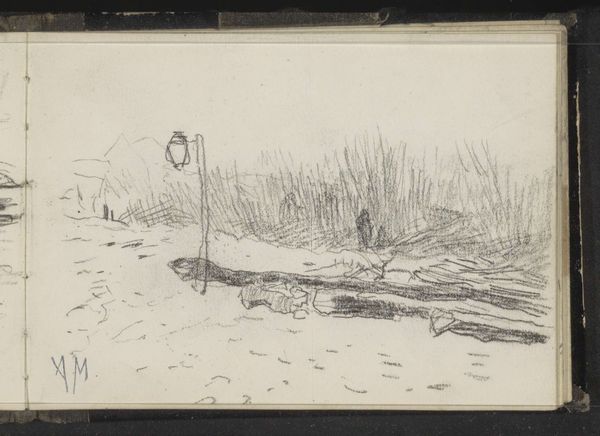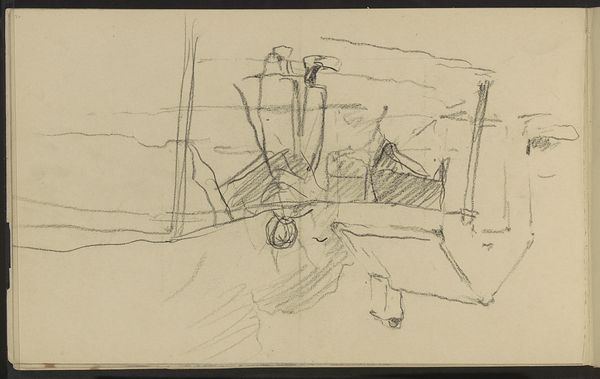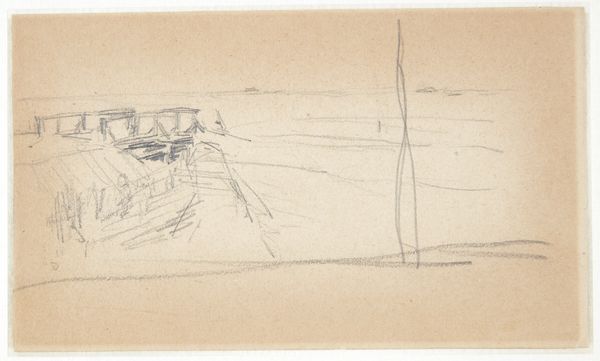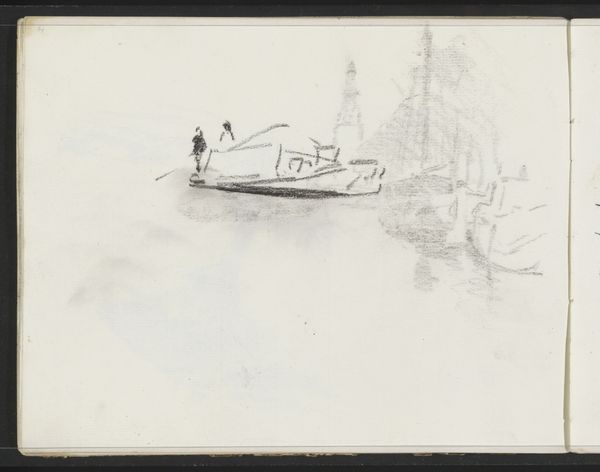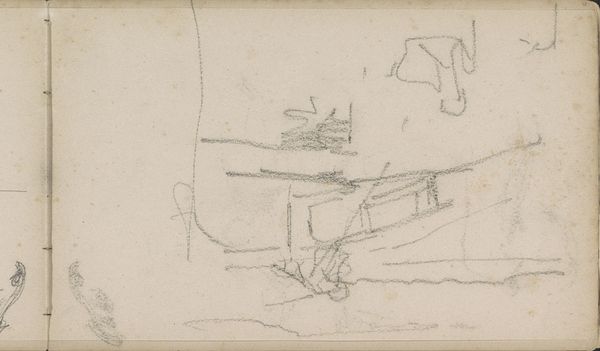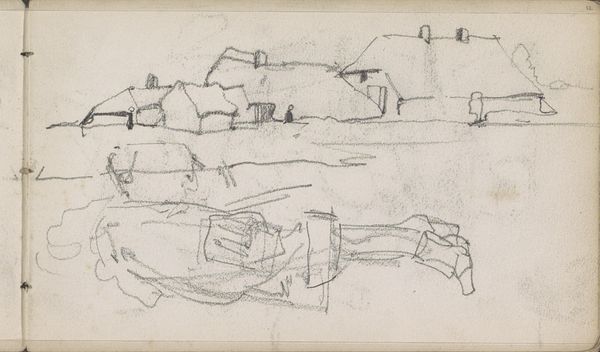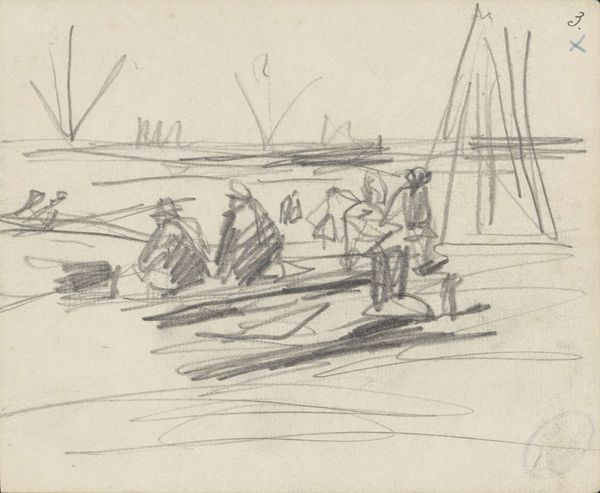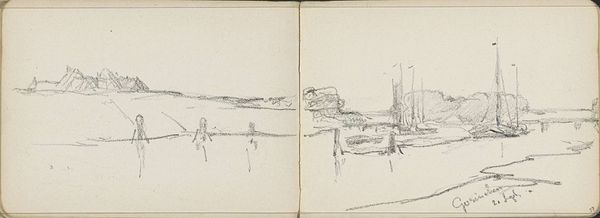
Copyright: Rijks Museum: Open Domain
Curator: Welcome. We're standing before a work by George Hendrik Breitner titled 'Studie, mogelijk van een aangemeerde boot', which translates to "Study, possibly of a moored boat". The piece, crafted with graphite on paper, dates from approximately 1886 to 1923 and currently resides here at the Rijksmuseum. Editor: It has such a delicate, fleeting quality. The lines are so minimal, it feels like the artist just barely captured the scene before it disappeared. You can almost feel the subtle movement of water just through a series of seemingly quick and spontaneous graphite strokes. Curator: The choice of graphite speaks to its utility in quickly documenting a moment, emphasizing its value to Breitner, who was entrenched in representing the social reality and everyday encounters in Amsterdam. Considering that he also utilized photography as an evidentiary method, his process becomes clearer. It becomes a social observation rooted in materiality. Editor: I appreciate you mentioning the labor tied to documentation, particularly as Breitner sought to record quotidian existence through his drawings. It's interesting how a seemingly simple medium, such as graphite, can serve to reveal socio-political motives. Curator: Exactly. It seems like the choice of medium here wasn't about achieving perfection, but rather about efficiently representing the urban realities and capturing ephemeral instances of work on water that would otherwise go unnoticed and fade. Editor: I see it now, the drawing acts as an historical archive, representing labor as a central feature of life within the city—while the gestural and rather quick manner emphasizes the immediate, material conditions and reality. Curator: Furthermore, as part of the post-Impressionist movement, there's this emphasis on personal and subjective visual perception. So what Breitner has captured on paper here does not present some objective fact; instead it provides a brief view on society and industrialization through a single lens, reflecting the experiences from a singular social position. Editor: The post-Impressionist element further underlines its emphasis on materiality, rejecting earlier idealization of beauty by allowing a certain grit and subjectivity. And that brings new dimension into how we can approach reading labor through an intimate portrait. Curator: Absolutely. Now, looking at it again, I realize I walked away having an altered sense of historical empathy; I began appreciating this quiet sketch not only for what is portrayed in the moment, but also its connection with broader discussions around society and individual place. Editor: I will keep an eye out for material conditions. I feel as though a deeper understanding on the materiality and mode of production unveils dimensions around gender, class, and race dynamics that should not be overlooked when thinking about labor.
Comments
No comments
Be the first to comment and join the conversation on the ultimate creative platform.
